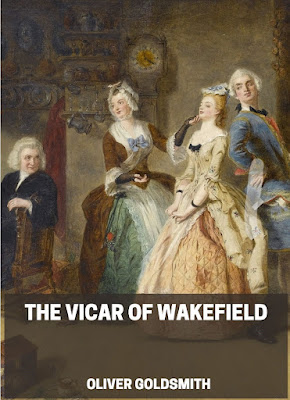The Vicar of Wakefield
by Oliver Goldsmith
The Vicar of Wakefield is a satirical story by Anglo-Irish novelist Oliver Goldsmith, first published in 1766. The plot follows Dr. Charles Primrose, a vicar who lives in a country parish with his wife and children in a perfect existence. However, all that changes when Primrose loses all his wealth and his family end up moving to another parish owned by Squire Thornhill, a womaniser with a dubious reputation. In a seeming analogy to Job in the Bible, the vicar goes through some terrible times, including his son moving away, his daughter's apparent death, and their house burning down. Extremely popular in Victorian society, The Vicar of Wakefield is mentioned in many other novels, including George Eliot's Middlemarch, Jane Austen's Emma, Charles Dickens' A Tale of Two Cities and David Copperfield, Mary Shelley's Frankenstein, Charlotte Brontë's The Professor and Villette, Louisa May Alcott's Little Women and in Johann Wolfgang von Goethe's The Sorrows of Young Werther.
About the Author
Oliver Goldsmith (10 November 1728 – 4 April 1774) was an Anglo-Irish novelist, playwright and poet, who is best known for his novel The Vicar of Wakefield (1766), his pastoral poem The Deserted Village (1770), and his plays The Good-Natur'd Man (1768) and She Stoops to Conquer (1771, first performed in 1773). He is thought to have written the classic children's tale The History of Little Goody Two-Shoes (1765). Wikipedia
Buy Oliver Goldsmith Books at Amazon
The PDF might take a minute to load. Or, click to download PDF.
If your Web browser is not configured to display PDF files. No worries, just click here to download the PDF file.



.jpg)